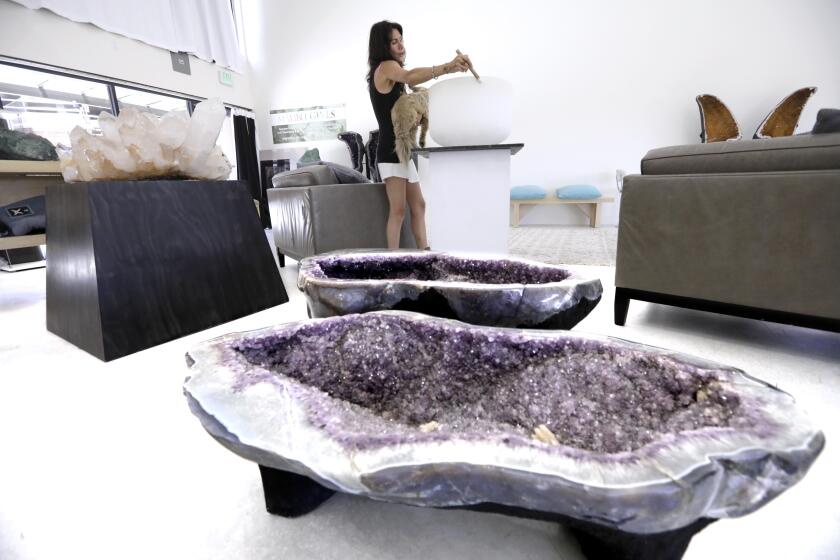âBring me a boat tomorrowâ: Inside the pandemic yacht boom
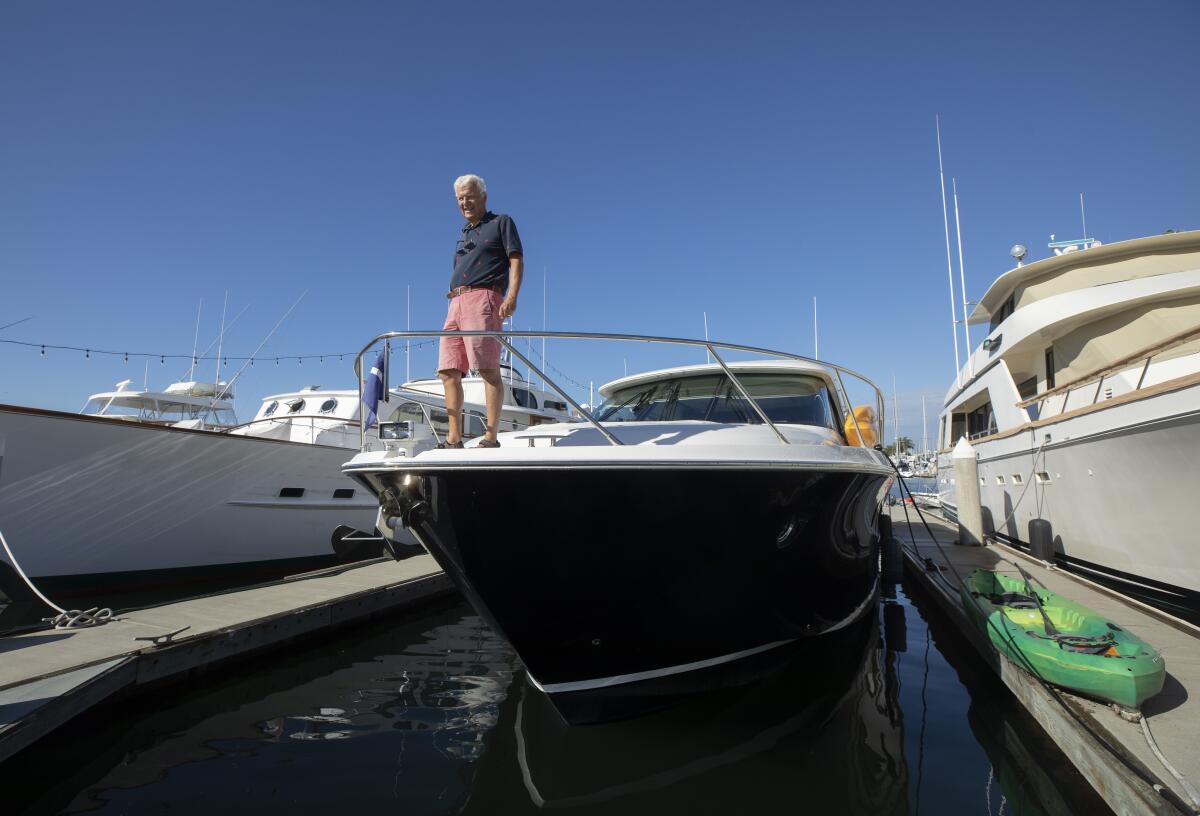
Ahead of his 40th birthday this past summer, Eric Dela Cruz decided to fulfill a lifelong dream and buy a yacht. With his budget, he figured itâd take no time at all.
âI thought, âHey, if you can afford $1.5 million, or $2 million, it should be like thisââ â said the restaurateur, snapping his fingers â ââBring me a boat tomorrow.â But no.â
Yacht broker Trenton Carroll knows this all too well. Before the pandemic, it was typical for him to have up to $10 million worth of inventory at any given time and it could take six months to make a sale, even after tacking on discounts and other incentives. Now he rarely has anything in stock; the other week, a pre-owned sailboat was snapped up, sight unseen, 12 hours after he listed it.
âThe biggest problem weâre having is we canât get boats fast enough,â said Carroll, who works for Cruising Yachts and has been in the business for two decades. âIâve got boats sold out to 2023 that wonât be here for a year and four months, and yet people are willing to wait because they know thereâs nothing else around.â
Meanwhile, people who already own boats are facing prolonged delays getting them repaired, cleaned, painted and upgraded. Bill Wolf, 74, canât even find a place to dock his powerboat at the California Yacht Club in Marina del Rey, where heâs been on a wait list for a 50-foot slip since May 2020.
Long Beach doesnât have any space, Newport Beach doesnât have any space. Itâs pretty easy to find a 30-foot slip because no oneâs buying 30-foot boats anymore; they want bigger.
— Yacht owner Bill Wolf
Itâs a waiting game everywhere up and down the marina as yacht dealers and boat workers contend with what they say is the largest supply-and-demand disparity since the freewheeling, big-spending days that preceded the Great Recession. That downturn crippled boat sales for years, and brokers braced for a repeat when the first wave of COVID-19 lockdowns went into effect.
The opposite happened. Business tanked for a few weeks but quickly rebounded as restrictions throttled air travel and stir-craziness set in. Americans turned to all manner of outdoor activities â road trips, hiking, biking, camping â to help them cope and pass the time.
Eager to escape claustrophobic pandemic life and take advantage of newly remote jobs, increasing numbers of Americans are taking to remote places in rugged vehicles that are also homes.
The open ocean provided the ultimate low-risk getaway. People who could afford it chartered boats. Those with even greater financial means just bought them outright. And thanks to surges in investments such as stocks, real estate and Bitcoin, the number of people with yacht money has never been bigger â even as the economy as a whole struggles to shake off the effects of the pandemic.
The number of new boats sold in the U.S. in 2020 hit a 13-year high of nearly 320,000 vessels, up 13% from the year before, according to the National Marine Manufacturers Assn.; the group had forecast a 2% annual rise before the pandemic. Yachts outperformed the industry, with unit sales rising 15%.
(The marine association classifies a yacht as a boat of at least 33 feet in length, but there is no standard definition. When asked about the difference, a spokesman for the California Yacht Club said: âWhen you go in and say, âHow much?â itâs a boat. When you say, âI donât care what it costs,â thatâs a yacht.â)
When factoring in the used-boat market, more than 1.3 million boats were sold nationwide last year. Calling it a ârecreational boating boom,â the marine association said 415,000 Americans became first-time boat buyers, the first increase in more than a decade.
Not that theyâre necessarily using their new toys for boating per se.
âI know it sounds kind of crazy, but 60% of the people, 70% of the people, may never take their boats out,â Carroll said. âTheyâll have friends on the dock, and theyâll have little get-togethers: âHey, come for wine â Fess Parker or Opus One.â And theyâll watch the sunset go down, and theyâll sit around and brag about how great they are and how theyâre legends in their own mind.â
Itâs gone gangbusters. Thereâs no inventory. The builders canât build boats fast enough. Weâre getting full-price offers and selling within days. One of my colleagues just sold a $10-million boat.
— Tom Hugh-Jones, a yacht broker at Denison Yachting
Many of the same factors that led to runs on houses, cars and luxury retail goods during the pandemic are also at play in the boating bonanza.
Yacht availability is being constrained by supply chain disruptions for boat-building materials, including fiberglass, stainless steel and resin. Skilled labor shortages are also causing slowdowns in the pipeline.
On the demand side is the historic increase in buying power among the ultra-wealthy. The bull market has disproportionately benefited those who already had huge reserves of money, and their existing investments combined with wealth-friendly tax laws further widened the socioeconomic gap.
As a result, the number of individuals with more than $50 million in net worth has increased by 24%, the largest increase in nearly two decades, according to this yearâs Credit Suisse Global Wealth Report. Billionaires have seen their wealth surge by 69%, according to Oxfam.
Or as Tom Hugh-Jones, a broker for Denison Yachting in Marina del Rey, put it: âThe filthy rich got filthier richer.â
Heâs not complaining. Denison Yachting was the leading brokerage of super yachts last year, selling 65 vessels of more than 80 feet in length; it sold 40 more super yachts in the first quarter of this year. One of its 2020 transactions â for an $839,000 52-foot catamaran in Florida â was the fifth time a customer paid using cryptocurrency.
Flush with pandemic savings and eager to embrace all things wellness, wealthy consumers are seeking out huge crystals to decorate their homes and backyards.
All told, in the 12 months before March 15, 2020, the company sold 795 boats; in the 12 months after, it sold 974. And Hugh-Jones says that number would have been higher if Denison had had more vessels on hand.
âItâs gone gangbusters. Thereâs no inventory. The builders canât build boats fast enough. Weâre getting full-price offers and selling within days,â he said on a recent Monday, while a fellow Denison broker nearby unboxed and installed parts on a new Dufour 360, already sold, that had just arrived from France. âOne of my colleagues just sold a $10-million boat.â
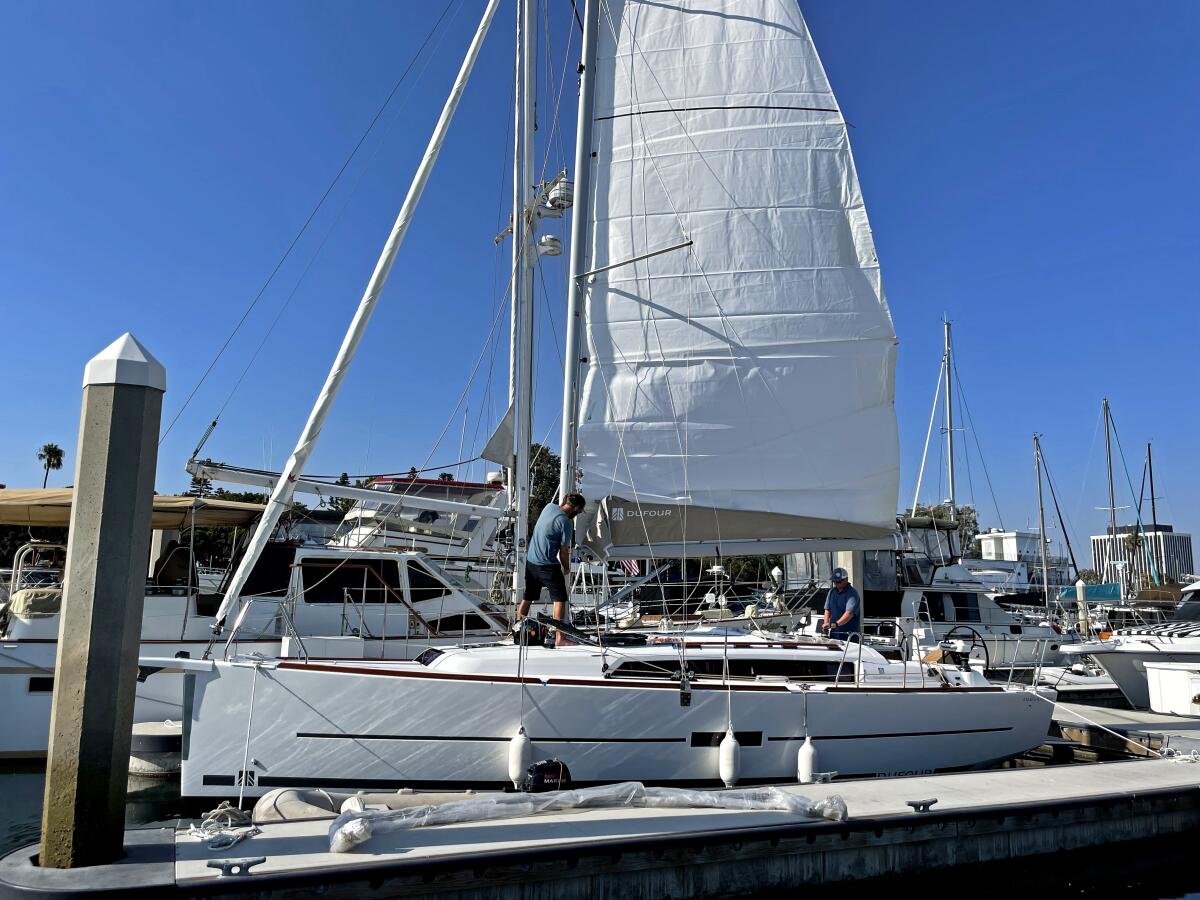
Supply has become so limited that Wolf has been approached by boat buyers hoping heâll sell, not unlike homeowners who are receiving random calls from real estate agents.
In 2016, the semi-retired accountant from Sherman Oaks added a yacht to his boat collection: a sleek black-and-white Tiara 53 powerboat that he named Pied-a-Mer. The vessel depreciated âpretty rapidly,â dropping in value to about 80% of its purchase price after a year or two, he estimated.
Nowadays, heâs fielding unsolicited offers from brokers and middlemen who want it â and are willing to pay more than the $1 million that Wolf shelled out five years ago.
âThey have customers that are dying to get these boats,â he said. âItâs tempting to sell.â
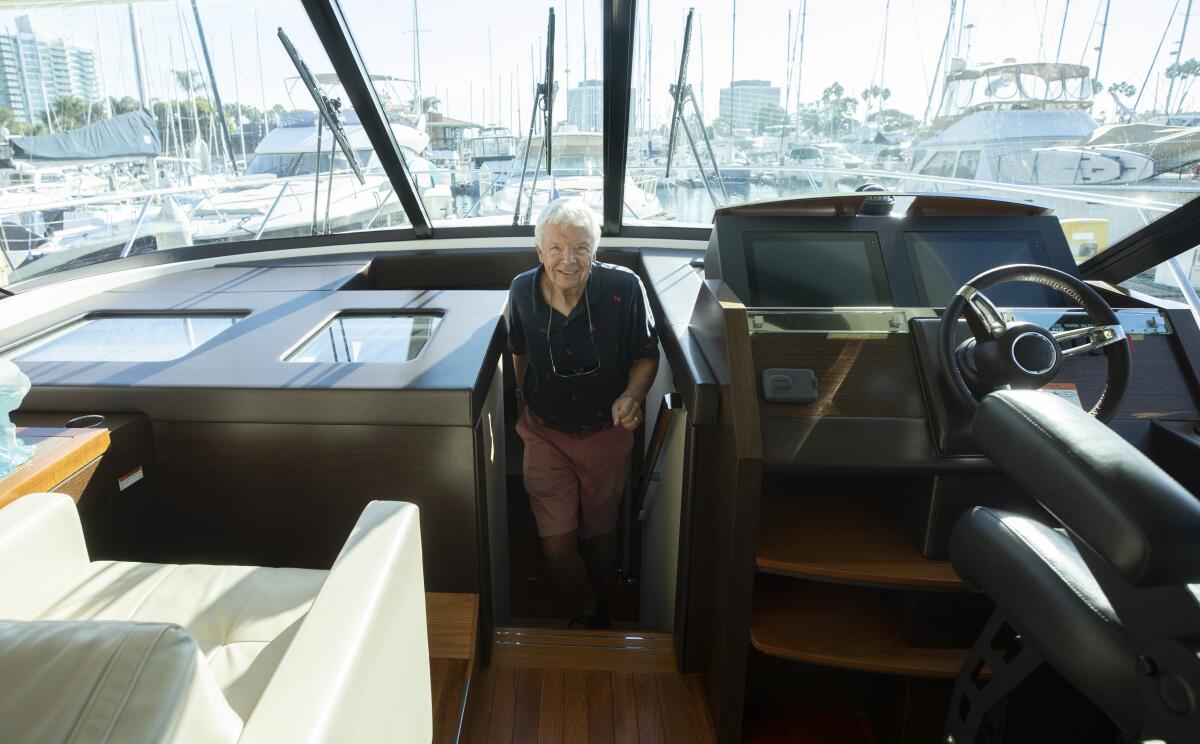
Wolf has decided to hang on to Pied-a-Mer and bide his time on the California Yacht Club slip wait list, where heâs now No. 3 after 17 months. After using another memberâs slip temporarily, he recently had to relocate the boat to San Pedro until itâs his turn.
âIâve had a large boat now for about 10 years, and in the beginning it was pretty easy to find a slip,â Wolf said. Now âthere are almost no 50-foot slips available. Long Beach doesnât have any space, Newport Beach doesnât have any space. Itâs pretty easy to find a 30-foot slip because no oneâs buying 30-foot boats anymore; they want bigger.â
Boat brokers arenât the only ones reeling it in. Mechanics, parts suppliers, cleaning crews and charter companies are all slammed.
Yacht mechanic Alfonso Uc is backed up one month with appointments, and his sons, Jesus and David, are quoting three-month lag times for their boat electronics services, even after they raised their hourly rate to $120, up from $100 before the pandemic.
The brothers recently installed a $25,000 sound system on a brand-new 62-foot catamaran for a Long Beach client, and are now in the middle of putting in $15,000 worth of multicolored neon lighting on the vessel.
âA lot of people want the wow factor,â Jesus, 30, said. âObviously it costs a pretty penny.â
Ian Roberts, who owns boat-cleaning company Below the Waterline Diving Service, had to hire two additional divers to keep up with customers needing the bottoms of their yachts scrubbed.
Greg Schem would love to bring on more employees to help with the increased workload at the Boat Yard, his full-service boat repair yard and marina; heâs booked out two to three weeks. But itâs been difficult to find and retain workers who are willing to do the kind of grueling tasks required, he said. Plus heâs having to contend with major supply delays, which is making the backlog worse.
âIf there are specific parts for boats manufactured in other countries,â he said, âit just takes a long time to get here.â
On ships caught in the huge floating traffic jam off L.A., seafarers with scant access to vaccines have been stuck in limbo for months. Unions tell of despair and violence.
The demand isnât expected to ease any time soon. New boat sales in the U.S. during the first quarter were up 30% over the same period in 2020, the National Marine Manufacturers Assn. said.
Globally, the yacht market is forecast to hit $8.5 billion this year, up from $8.15 billion in 2020, and is estimated to reach $12.16 billion by 2028, according to market research firm Grand View Research.
When Dela Cruz, the restaurateur, first set out to buy a boat, he wanted a new one. But after learning he might have to wait more than two years, he changed course.
It took six months of around-the-world searching before he found the perfect brokerage boat: a handsome 2018 Cruisers Yachts 60 Cantius with a flybridge, three cabins, a king-size bed in the master, two bathrooms with rainfall showers, leather sofas, automatic blinds and a wine cooler.
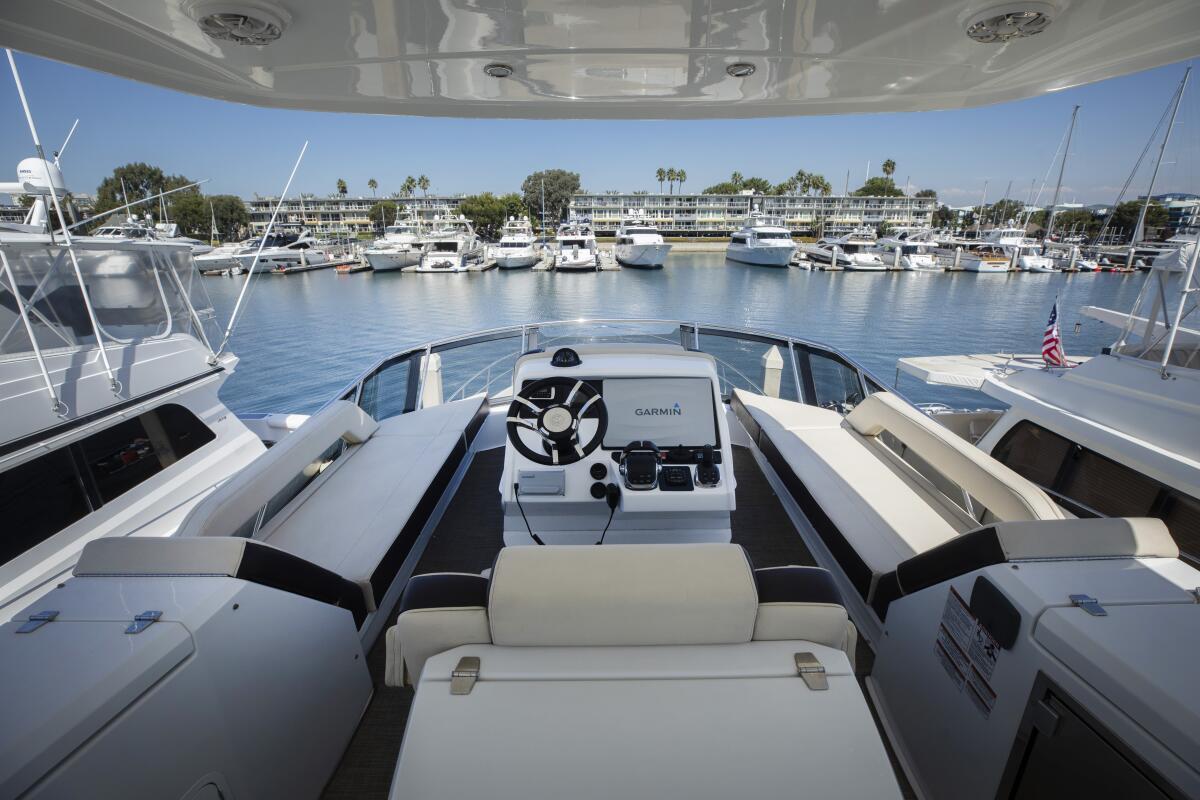
He paid $1.4 million to the original owner, a contractor who lives in Maryland and was offloading it to upgrade to a $4.5-million yacht. Dela Cruz took possession in September, flying to the East Coast to take his birthday gift on a trip to the Bahamas before having it shipped to Los Angeles.
âWe had to go out of state because we couldnât find a big enough boat and we couldnât find a nice enough boat for him,â said his broker David Jacobson, 27, who works for Cruising Yachts. âWe found this boat in Annapolis, and we made an offer on it sight unseen. We didnât have the option of not taking action.â
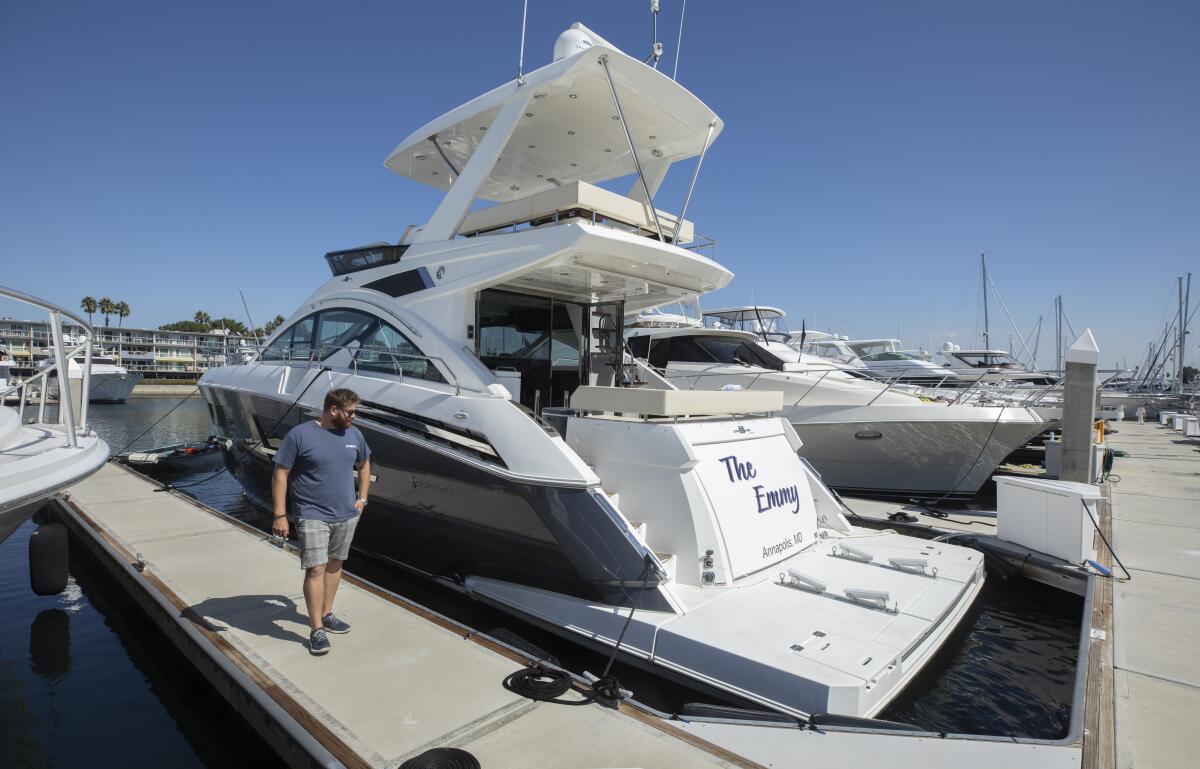
Dela Cruz, who lives in Porter Ranch and made his money opening and running the Southern California fast-casual restaurant chains Main Chick and Oi Asian Fusion, already has a business plan for his yacht. He intends to use it a couple of times a week and then take advantage of the surge in boat rentals by putting it into the charter business.
Itâs a smart strategy, said Carroll, who has watched the number of party boats swell in the last year and a half. On a spin through the harbor on a recent Saturday, he pointed to one headed out to sea, music blaring from across the channel, its deck packed with bikini-clad women.
âThatâs a hell of an indicator right there,â Carroll said. âWhen you start seeing the girls twerking, then you know itâs definitely charter. And it gets louder as the day goes long.â
Once Dela Cruz obtains a charter permit and makes some upgrades, his yacht â which he has renamed Paper Boat â could live up to its new name and bring in some serious paper.
âIf this thing actually charters well, it pays for itself,â he said. âSo that means, âHey, maybe I can afford another one.â Then maybe it turns into a fleet.â
More to Read
Inside the business of entertainment
The Wide Shot brings you news, analysis and insights on everything from streaming wars to production â and what it all means for the future.
You may occasionally receive promotional content from the Los Angeles Times.


